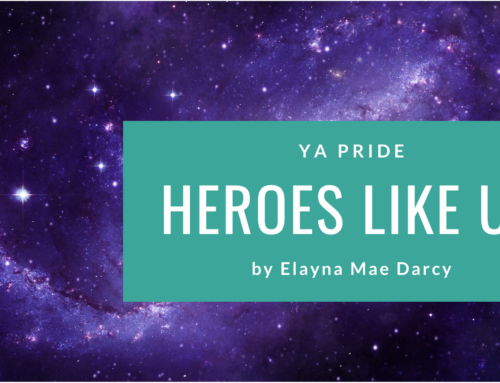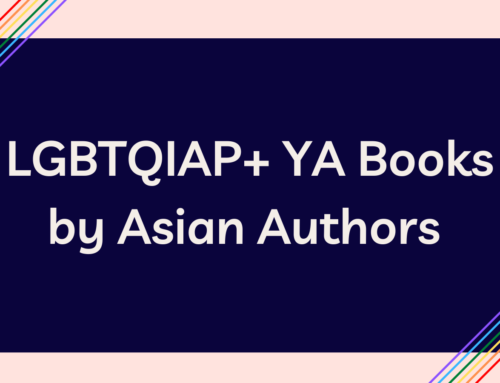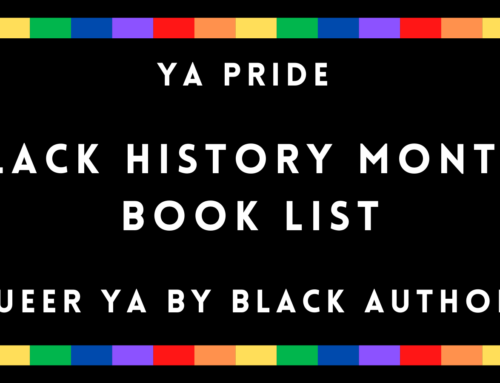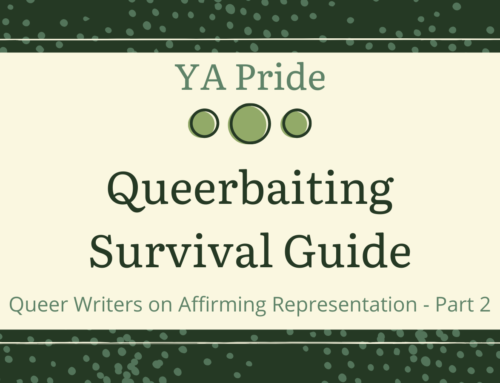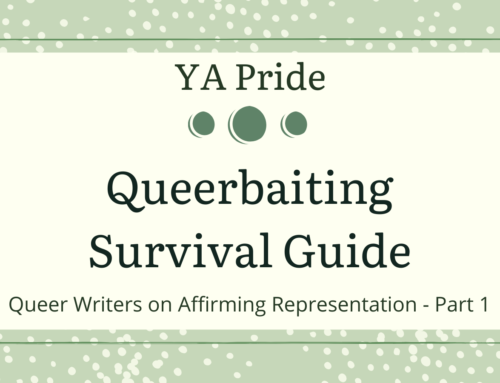by Sonia Alejandra Rodriguez, PhD
Juliet Milagros Palante is a 19-year-old Puertoriqueña from the Bronx. She knows she’s gay but hasn’t told her family. She decides to come out to her family the night she’s set to travel to Portland, Oregon Juliet Takes a Breath is everything! I found Gabby Rivera’s[2] debut novel to be a much needed sorts of “how-to guide” on being a young queer Latina. It is important to note there aren’t many young adult or new adult novels with LGBTQI Latina characters. In a previous GayYA post I wrote about the need for novels that capture the complex experiences of queer young Latinas. Rivera does just that. Through Juliet, Rivera has created an endearing and complex character with struggles with which many queer Latinx youth can relate. Juliet’s coming out is difficult for many of the typical reasons—fear of losing her family, concern for her physical safety, and a desire to belong. However, Juliet’s coming out is also tied to her ethnicity and her class status— which even she won’t realize until much later. Readers can follow along Juliet’s process as she learns more about her queer Latina identity. Throughout this journey Rivera drops names, terms, and history facts like: Lolita Lebron, Audre Lorde, bell hooks, Assata Shakur, Octavia Butler, PGPs, microaggressions, womanist, white feminism, banana republics, and more. This new knowledge forces Juliet to reconcile her Puerto Rican identity with her queer identity. At times Juliet is also asked to understand the complicated and oppressive role the United States has played in Latin America. Juliet also learns about the dangers of essentializing feminism and womanhood. In 2013 the Human Rights Campaign (HRC) and the League of United Latin American Citizens (LULAC) released a report of a survey conducted with 1,937 self-identifying Latino and LGBT[4] youth as an attempt to provide a broad spectrum of LGBT Latino youth experiences in the United States. According to the report, “LGBT Latino youth suffer more isolation in their communities than their non-LGBT Latino peers in several specific ways. They are more likely than non-LGBT Latino youth to face harassment and violence in the community, and much less likely to participate in a variety of community activities” (26). Simply put, LGBT Latino youth face more harassment and violence in their communities than straight and cis Latino youth. Furthermore, the data collected suggests that as a result of this isolation and harassment, “LGBT Latino youth are twice as likely as non-LGBT Latino youth to say they will need to move to be accepted” (27). In other words, majority of the LGBT Latino youth in this study feel that in order to be open about their sexuality they must leave their community. Juliet and the HRC report demonstrate that more conversations about the reasons queer Latinx youth feel they need to leave their communities to be openly out and about the ways communities can create safe spaces for their queer youth are imperative. All this to say that Juliet is not alone. Many will be able to relate to her need to escape her family, her community, and even her culture in order to be out. Juliet captures a desire to survive and to thrive as a gay person. However, it is also important to understand the larger context and longer histories of oppression that have made it appear that young queer Latinx cannot thrive in their own ethnic or cultural communities. Very simply put, the juxtaposition that Juliet lays out between the Bronx and Portland stems from what Jasbir Puar calls “homonationalism.[5]” That is, there’s a dominant (often read as white male) gay experience that is more often accepted, and therefore more often represented, in society that does not allow for other gay experiences (like those of queer people of color and native people) to be part of the narrative. The history and consequences of homonationalism are a few of the reasons why Juliet feels that Harlowe and Portland have more to offer her in regards to her queer identity than the Bronx or her family can. Watching Juliet go through this process of understanding her Puerto Rican identity in relation to her queer identity is both beautiful and heart-wrenching. Through Rivera’s narration it is evident that Juliet has high hopes for Harlowe and for Portland. As a reader, I can relate a bit more to Ava’s, Juliet’s queer cousin, own political consciousness and while I really hoped that Juliet would find what she was looking for in Portland I was also very afraid for her. By the time Juliet gets to the Portland airport she is very vulnerable. Her mother refused to talk to her after she revealed she was a lesbian. To top that off she’s also experiencing a lot of culture shock. Portland is way different from the Bronx. Readers will have so many feels for Juliet. I know throughout the novel I wanted to give this nena a hug. Harlowe eventually lets Juliet down in a very racist and oppressive way. It will be a painful, and even triggering, scene to read. Juliet, like many of us with underrepresented and marginalized backgrounds, was searching for knowledge, understanding, and belonging. Often times we gravitate to information that is available in search of ourselves and cling on for dear life to the parts we understand. Juliet wanted to see herself in Harlowe and in Raging Flower because she needed to see herself represented. Harlowe’s betrayal forces Juliet to turn to her family for support. It turns out that her family is more supportive than she thought when she first left for Portland. Her cousin Ava, also a queer Latina character, is a fountain of information throughout the novel but is unable to fully get through to Juliet until after that Harlowe incident. Ava takes Juliet to a party exclusively for queer people of color where she refuels her energy and develops a new sense of self. Spending time with her family and learning from and with them is a vital part of Juliet’s identity construction. After figuring things out with Harlowe, Juliet returns to the Bronx and reaffirms her love for herself through a letter: “Dear Juliet, / Repeat after me:/ You are a brutal. / You are a warrior. / You are a feminist. / You are a beautiful brown babe” (258). I call Juliet Takes a Breath a how-to guide of sorts not because it has all the answers but because the reader learns much about queer identity, feminism, and Latinx history alongside Juliet. There is no right prescription for finding one’s identity and Juliet demonstrates that. Her research in the library, her participation in the queer sci-fi workshop, and even her new hair cut suggest that that the focus of the “how-to” strategy is to trust in our voice and the knowledge that surrounds us (including using our family as sources of information). Rivera introduces us to a character with whom many young queer Latinas will relate. Novels like these are significant because there are plenty of Juliets searching for themselves and this book gives them an opportunity to see themselves represented. Juliet Takes a Breath tackles many issues that queer youth, a more specifically queer Latinas, will understand. Furthermore, this novel is an opportunity to break down the misconception that queer youth of color need to leave their communities to be openly gay. While that need has certainly been fueled out of a desire to survive because not all families are supportive and there is no denying the history of violence against gay and queer bodies, we must also make room to commit ourselves to creating safe communities for our queer Latinx youth. Rivera’s book is a gift to this and future generations of queer Latinas. I expect Rivera will receive many fan letters asking for opportunities to intern with her. [1] Gentrification and the displacement of black and brown residents is a serious issue in Portland, Oregon. Recently, Portland has been named the “most gentrified city of the century” (https://www.colorlines.com/articles/gentrification-spotlight-how-portland-pushing-out-its-black-residents) and “hipster heartland.” While gentrification is not a major theme in this novel, there’s a glimpse of it when Juliet takes the bus late at night (p.74-75). [2] Gabby Rivera “is currently the Youth programs Manager at GLSEN and is developing their National Student Council and curriculums for GSAs across the country. She’s fostered other LGBTQ youth groups and taught as a multi-media artist for organizations such as the DreamYard Project” (Back of book matter). Learn more about Rivera at gabbyrivera.com [3] This need to leave home to be Latinx and gay comes up in Alex Sanchez’s Rainbow Boys, Mayra Lazara Dole’s Down to the Bone, Rigoberto Gonzalez’s The Mariposa Club, Charles Rice-Gonzalez’s Chulito, for example. [4] I use the term “LGBT Latino youth” because that is the term used in the report released by HRC and LULAC. [5] Puar, Jasbir. Terrorist Assemblages: Homonationalism in Queer Times. Durham: Duke University Press, 2007. Print. — The novel opens with Juliet gushing over Harlowe Brisbane’s book. Raging Flower has awakened Juliet’s awareness about her body and her sexuality. From this book, Juliet found the empowerment she needed to come out to her family. Her love for Harlowe and the potential Portland has to offer is clearly juxtaposed to Juliet’s description of her side of the Bronx as a place that is loud, violent, and suffocating. Her antagonistic attitude is further reified when she’s harassed by young men of color trying to sexually pursue her. Juliet’s stark comparison between the Bronx, that is, her family, her culture, her ethnicity, and Portland, where she believes feminism and liberation await her, suggests that she feels she can’t be gay at home in her community. Unfortunately, this feeling is not uncommon among young queer Latinx and it is certainly an experience that is captured widely across queer and gay Latinx YA novels.[3]
The novel opens with Juliet gushing over Harlowe Brisbane’s book. Raging Flower has awakened Juliet’s awareness about her body and her sexuality. From this book, Juliet found the empowerment she needed to come out to her family. Her love for Harlowe and the potential Portland has to offer is clearly juxtaposed to Juliet’s description of her side of the Bronx as a place that is loud, violent, and suffocating. Her antagonistic attitude is further reified when she’s harassed by young men of color trying to sexually pursue her. Juliet’s stark comparison between the Bronx, that is, her family, her culture, her ethnicity, and Portland, where she believes feminism and liberation await her, suggests that she feels she can’t be gay at home in her community. Unfortunately, this feeling is not uncommon among young queer Latinx and it is certainly an experience that is captured widely across queer and gay Latinx YA novels.[3] Dr. Sonia Alejandra Rodriguez’s research focuses on the various roles that healing plays in Latinx children’s and young adult literature. She currently teaches composition and literature at a community college in Chicago. She also teaches poetry to 6th graders and drama to 2nd graders as a teaching artist through a local arts organization. She is working on her first middle grade novel. Follow Sonia on Instagram @latinxkidlit and on twitter @mariposachula8
Dr. Sonia Alejandra Rodriguez’s research focuses on the various roles that healing plays in Latinx children’s and young adult literature. She currently teaches composition and literature at a community college in Chicago. She also teaches poetry to 6th graders and drama to 2nd graders as a teaching artist through a local arts organization. She is working on her first middle grade novel. Follow Sonia on Instagram @latinxkidlit and on twitter @mariposachula8
